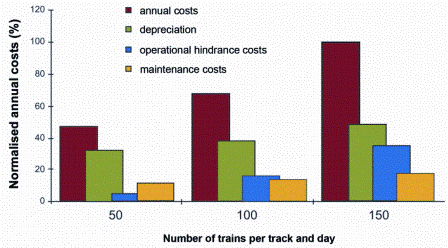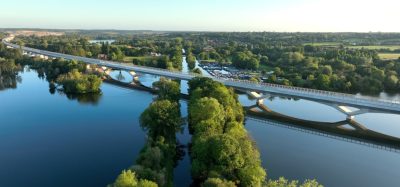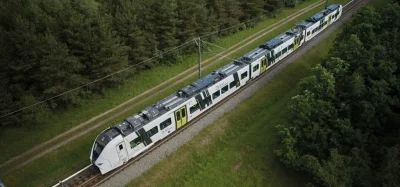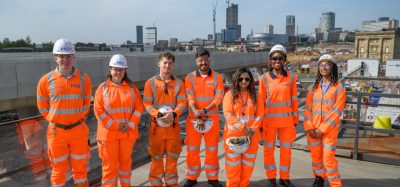ÖBB’s approach to sustainable maintenance of infrastructure
Posted: 1 August 2012 | | No comments yet
Increasing route utilisation, higher transport tonnages, shorter train intervals and greater speeds are, from the customers’ viewpoint, the most important characteristics of Austria’s railway network, which highlights the need for further maintenance of the lines. Since 2008, ÖBB-Infrastruktur AG has placed particular emphasis on the sustainable maintenance of its infrastructure and has implemented an entire package of focused measures.
The past: A specific characteristic of railway infrastructure and of the permanent way is the need for the construction elements to achieve the maximum possible service life, particularly due to the high investment levels involved. However, this service life can only be reached by an appropriately designed system backed up by a high level of maintenance. Depending on the traffic volume and the curve radius, the targeted service life of existing track systems is between 35 and 40 years. Unfortunately, in recent years, main tracks have had to be prematurely renewed. Decisions made in the past, which were not in favour of sustainability but were motivated largely by economic considerations, have had a disadvantageous effect.
Increasing route utilisation, higher transport tonnages, shorter train intervals and greater speeds are, from the customers’ viewpoint, the most important characteristics of Austria’s railway network, which highlights the need for further maintenance of the lines. Since 2008, ÖBB-Infrastruktur AG has placed particular emphasis on the sustainable maintenance of its infrastructure and has implemented an entire package of focused measures. The past: A specific characteristic of railway infrastructure and of the permanent way is the need for the construction elements to achieve the maximum possible service life, particularly due to the high investment levels involved. However, this service life can only be reached by an appropriately designed system backed up by a high level of maintenance. Depending on the traffic volume and the curve radius, the targeted service life of existing track systems is between 35 and 40 years. Unfortunately, in recent years, main tracks have had to be prematurely renewed. Decisions made in the past, which were not in favour of sustainability but were motivated largely by economic considerations, have had a disadvantageous effect.
Increasing route utilisation, higher transport tonnages, shorter train intervals and greater speeds are, from the customers’ viewpoint, the most important characteristics of Austria’s railway network, which highlights the need for further maintenance of the lines. Since 2008, ÖBB-Infrastruktur AG has placed particular emphasis on the sustainable maintenance of its infrastructure and has implemented an entire package of focused measures.
The past
A specific characteristic of railway infrastructure and of the permanent way is the need for the construction elements to achieve the maximum possible service life, particularly due to the high investment levels involved. However, this service life can only be reached by an appropriately designed system backed up by a high level of maintenance. Depending on the traffic volume and the curve radius, the targeted service life of existing track systems is between 35 and 40 years. Unfortunately, in recent years, main tracks have had to be prematurely renewed. Decisions made in the past, which were not in favour of sustainability but were motivated largely by economic considerations, have had a disadvantageous effect.
When ÖBB (the Austrian Federal Railways) changed over from the 49kg track profile to the 54kg profile, the geometrically less wellbalanced track profile type 54 E2 was selected. For its metre weight this profile has too small a rail foot width, which causes greater stress on the track fastenings due to increased lateral rail head deflection. Given the many curves in the ÖBB network, this situation had a negative impact.
In addition, the robust rib plate fastening of the concrete sleeper tracks was replaced too early by an angle guided plate fastening which, at that time, was not adequately dimensioned.
In a number of cases recently, both these circumstances have made it necessary to replace concrete sleeper tracks that follow tight curves after a period of only 20 years. The advantage of the concrete sleeper track – often existing jointed rails could be replaced by continuous welded rails that require less maintenance – did not have a lasting impact in curved tracks. Additionally, in using concrete sleepers, adequate dimensioning of the substructure was not always sufficiently considered. Higher deterioration rates and premature renewal were the consequence.
Goal
Since 1997, ÖBB has carried out intensive studies of the life cycle costs of tracks and turnouts. First, the cost drivers of a track were determined. Figure 1 shows the breakup of the harmonised annual costs between depreciation costs, pure maintenance costs and operational hindrance costs of an average track for different traffic loads.


Figure 1: Depreciation is the cost driver of the permanent way
The goal of optimising maintenance, which is to reduce track life cycle costs (LCC), can be achieved by extending the lifespan and thus reducing depreciation and operational hindrance. Pure maintenance costs make up the smallest proportion of the overall LCC.
The strategic goal of ÖBB is to extend the actual achievable service life of the track systems to a level between 35 and 40 years, while at the same time reducing the need for service and maintenance work. While not an impossible task, it demands appropriate design engineering and the consistent implementation of maintenance strategy. To reduce the length of track possession times in recent years, increased attention has been paid to combining and coordinating construction measures.
Strategy
With a package of measures in place, ÖBBInfrastruktur AG is able to fully exploit the service life of existing tracks, while, with the renewal work, ÖBB is using suitably high quality tracks which should allow a considerably longer service life.
In renewal work, the track is installed by special high performance track building machines. The renewal of a 5km-long section of track, including all the associated works, thus takes only 10 days. Generally speaking, the economically most advantageous length for renewal has proved to be a continuous stretch of track from one railway station to the next. Where necessary, any associated subsoil and drainage works should be carried out during the track construction work. The high initial quality can be verified by the permanent way measuring car. With new tracks, the standard deviation of the longitudinal level signal amounts to 0.4mm or less. In addition, the improvement of the track geometry quality throughout the network in recent years was also due to the fact that the necessary formation rehabilitation work had been carried out, which was done partly rail-mounted and partly in the conventional manner.
Where classic methods are used, the expenditure for substructure renewal is very high and requires large numbers of construction machines and trucks. In 1984, German Railways used the first rail-mounted formation layer machine, which considerably reduced expendi – ture. Since 1994, Austrian Federal Railways has been using the AHM 800, a ballast bed improvement system that represents the leading technology worldwide. Part of the excavated bedding material is reused in the machine and the formation material is always kept at the correct moisture con tent, ensuring optimum density and quality from the very start. With the latest process PM 1000URM the machine technology was developed further, now up to five layers can be laid and up to 100% of the excavated material recycled.
Based on 10 years of digitally measuring the track geometry quality by the permanent way coach, the ÖBB now has an expert system for planning maintenance at its disposal. This allows more precise planning of track maintenance and provides a tool to calculate the remaining service life of the components of the permanent way. On the basis of this estimate of the remaining components service life, a LCC calculation – a standard part of all major renewal work – is carried out to determine whether it is more economic to renew the permanent way as a whole, or merely to extend its service life by replacing certain components. Ever since LCC analysis has been used consistently, measures that increase service life, such as renewal of fastenings, have been employed more often.
Recently, it has proved possible to achieve a number of remarkable successes in design engineering, in particular thanks to the use of under sleeper pads. These under sleeper pads are fitted underneath the concrete sleepers giving the supported track a number of positive outputs. Above all, this means that the ballast bed is protected and, by decoupling sleeper and ballast, the high dynamic load on the ballast bed is greatly reduced. This considerably increases the service life of the ballast. A further advantage of under sleeper pads is that they largely prevent the formation of rail slip waves. Sharply curved tracks with corrugated rails are up to 15 dB louder than the new track systems now coming into use. Due to their positive qualities, in particular those that lengthen the service life, under sleeper pads have been used as standard for tracks and turnouts in the main network of ÖBB since 2007.
The element with the lowest investment costs in the construction of the permanent way, but in tight curves also the weakest part, is the fastening. By means of numerous studies and tests it has been possible to develop a fastening system that can meet the demands made by sharp curves. In combination with high-duty (HD) sleepers – which have a very high resistance to buckling – ÖBB now has at its disposal a track construction system that, even in extremely tight curves, is corrugation-free and resistant to wear (see Figure 4, page 34). The long service life and the low maintenance requirements of this track result in reduced life cycle costs.
The rails (above all in straight stretches of track) should essentially be dimensioned so that they do not have to be replaced during the track service life. In selecting rails for track curves, increasing use is being made of special, heat-treated rails, which reduce wear by a factor of around six.
However, a long service life also depends on high quality service and maintenance. The consistent implementation of the maintenance plan is therefore essential. In addition, very modern measurement tech – nologies, such as eddy current testing for assessment of crack depth in the rails, help with planning maintenance. Therefore, maintenance measures should always be harmonised with the remaining service life of the track to fully exploit the value of the asset.
By combining a number of construction measures it is possible to exploit the track possession times in an optimum way. Maintenance activities in the important core network are increasingly being coordinated and combined, the same applies to the renewal of sections that have a similar remaining service life. With the requisite advance planning it is even possible to use what was once a taboo theme, such as the complete closure of the Brenner line, for a general renewal of the permanent way and the tunnel equipment and to build a new bridge within a few months.
The extent and quality of the construction measures are also oriented according to the priority of the routes. The measures listed are employed in the heavily used main network. On the branch lines, less extensive works are carried out. Here, renewing shorter sections is also considered. For branch lines, the extent of maintenance work is subordinate to the lower traffic loads and the economic requirements.
The sustainability of the measures described in the network of ÖBB-Infrastruktur AG is already proven, with various condition parameters including track geometry quality and the track width situation, having reached their historic best ever levels. The number of sections with slow orders has, following a clear decrease, now arrived at a historic low. Consequently, the path taken by ÖBB-Infrastruktur AG is demonstrably the correct one.
Summary
For many years, ÖBB has been making intensive efforts to ensure the sustainable preservation of its infrastructure. Here, ÖBB-Infrastruktur AG makes an economic contribution and increases tangible customer benefits in the network. As part of the strategy of the goal network 2025+ the measures establish the basis for a modern and efficient Austrian railway system – for today and for generations to come. By employing the following coordinated measures, targeted useful lives for the permanent way of 40 years and more can be achieved:
- Use of prognosis tools to calculate the remaining service life of construction elements
- LCC evaluations of construction projects as standard
- Use of under sleeper pads and robust rail fastenings, particularly in the case of sharp curves
- Fitting the correct rail profile of the appropriate steel type, high strength rails in tight curves
- Consistent implementation of the maintenance plan with the appropriate tamping and rail work cycles
- Use of high performance track construction machines to produce high initial quality
- Coordination and combination of construction measures.
About the author
After studying at the Higher Technical College of Vienna in the Department of Civil Engineering, Andreas Matthä joined ÖBB in 1982 working in Construction Management. Andreas has worked in various ÖBB departments including the Planning and Engineering Division and the Controlling and Finances Division of ÖBB-Infrastruktur Bau AG. Between 1998 and 2002, alongside his professional work, Matthä studied Executive Management at the Vienna University of Applied Sciences and achieved a Master’s Degree. Since October2009, Matthä has been Speaker of the Board for ÖBB-Infrastruktur AG.
Global Railway Review Autumn/ Winter Issue 2025
Welcome to 2025’s Autumn/ Winter issue of Global Railway Review!
The dynamism of our sector has never been more apparent, driven by technological leaps, evolving societal demands, and an urgent global imperative for sustainable solutions.
>>> Read the issue in full now! <<<
Issue
Related topics
Route Development, Track/Infrastructure Maintenance & Engineering







